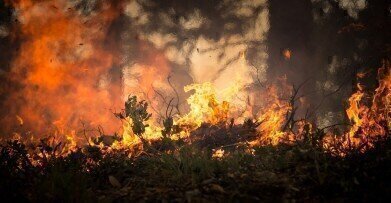Environmental Laboratory
Can Forests Return After Wildfires?
Sep 25 2020
With wildfires spreading across the US, Australia, Brazil and beyond on an unprecedented scale in recent years, deforestation has become a key watchword for environmentalists and the mainstream media. Now, a new study from the University of Colorado Boulder has suggested that there may be even more cause for concern than previously thought.
By analysing more than 710 square miles of forested area that have been adversely affected by wildfires over the last three decades, the team investigated how resilient the land was becoming to such catastrophes. Depressingly, they found that Douglas fir and ponderosa pine in particular were susceptible to irreparable damage from the blazes, with the land often converting to grasslands even up to 15 years after the inferno has been contained.
An encroaching threat
In recent years, the incidence and intensity of wildfires has increased across the globe. This has led to the devastation of millions of natural habitats for vulnerable wildlife, the destruction of countless trees and the deterioration of air quality in the surrounding area. The phenomena have prompted calls for communities to be better informed about the effects of such fires, allowing them to take action both before and after the fact to mitigate the worst impacts.
With that in mind, researchers from the University of Colorado Boulder examined 22 scorched sites over 710 square miles, stretching from southern Wyoming down to northern New Mexico. In particular, they focused their efforts on two species: Douglas fir and ponderosa pine, which make up around half of the trees in the study areas.
The team used satellite imaging data and on-the-ground observations of metrics like tree rings and juvenile saplings to compile a picture of how well the land was recovering. Unsurprisingly, they noticed that the locations which enjoyed cooler temperatures and increased precipitation were more susceptible to bouncing back, while those on lower-lying ground and hotter climes did not fare so well.
A gloomy outlook
As well as investigating how well forested areas have rebounded in the past and present, the team also explored projections of how they might hold up in the future. To do so, they employed statistical modelling programmes to ascertain how the two tree species might fare in a number of different scenarios. In one, no action to mitigate climate change and curb emissions was taken at all, while in another, so-called “moderate emissions scenario”, a drop-off in harmful gases was observed after 2040.
Under the former scenario, the study made for particularly depressing reading. If emissions are allowed to continue unchecked in the coming decades, a mere 6.3% of Douglas firs and only 3.5% of ponderosa pines are projected to survive by 2051. The outcome was slightly better under the moderate emissions scenario, but still less than a fifth (18%) of both species were expected to be able to bounce back.
“This study and others clearly show that the resilience of our forests to fire has declined significantly under warmer, drier conditions,” explained Tom Veblen, co-author on the study. “The big takeaway here is that we can expect to have an increase in fire continue for the foreseeable future, and, at the same time, we are going to see much of our land convert from forest to non-forest.”
Digital Edition
IET 34.2 March 2024
April 2024
Gas Detection - Biogas batch fermentation system for laboratory use with automatic gas analysis in real time Water/Wastewater - Upcycling sensors for sustainable nature management - Prist...
View all digital editions
Events
Apr 24 2024 Jakarta, Indonesia
Apr 24 2024 Sao Paulo, Brasil
Apr 30 2024 Melbourne, Australia
Apr 30 2024 Birmingham, UK
May 03 2024 Seoul, South Korea


















